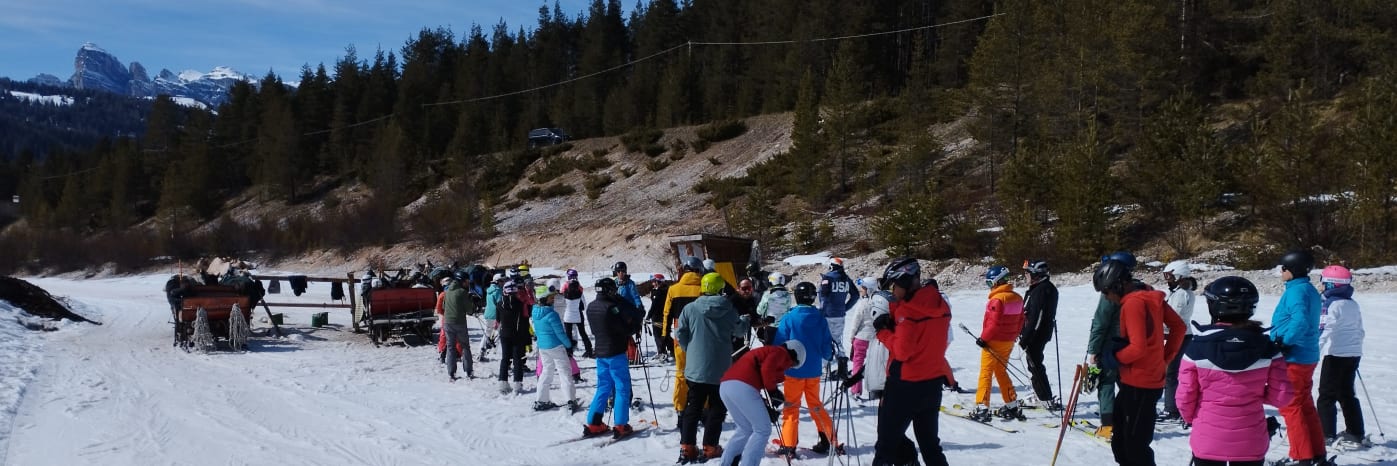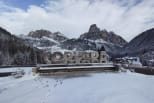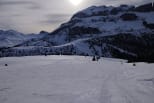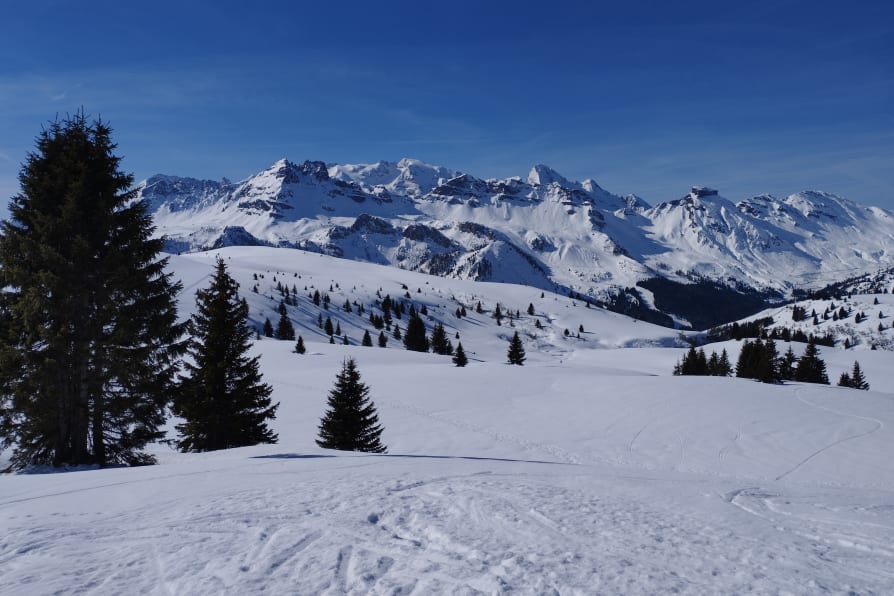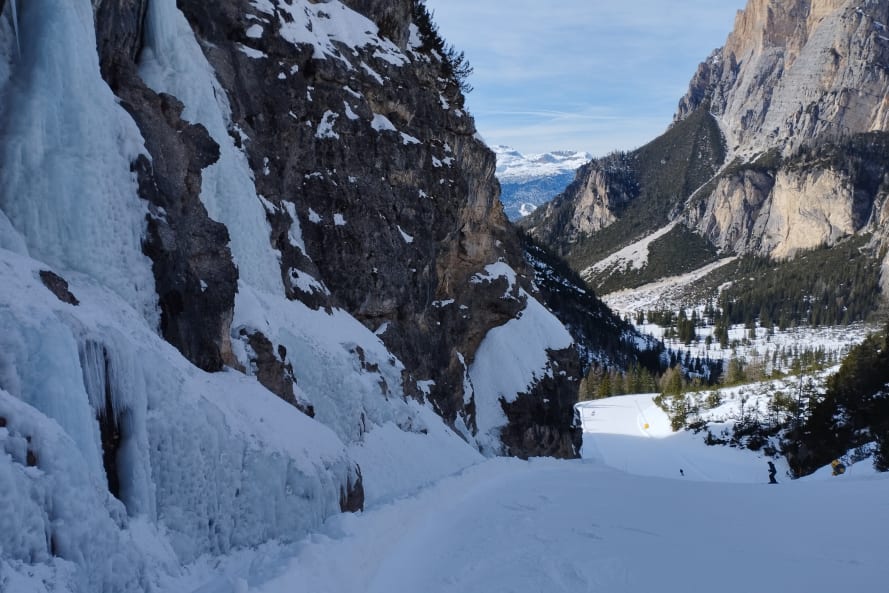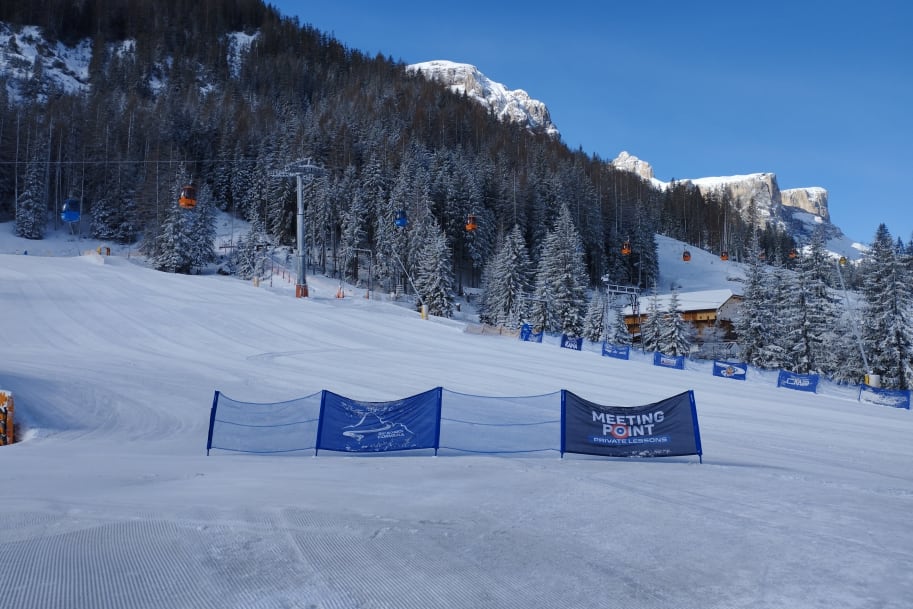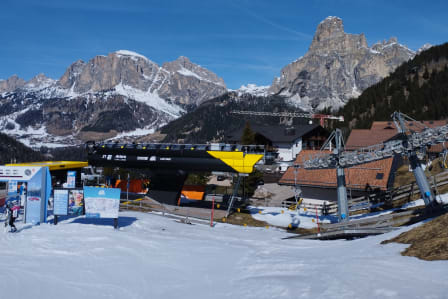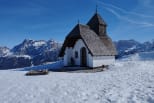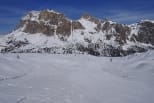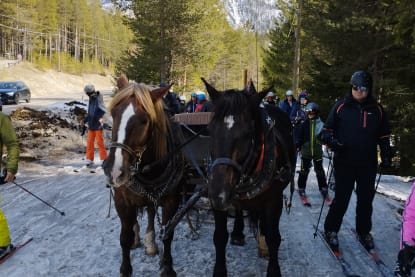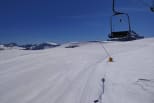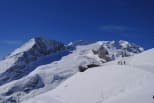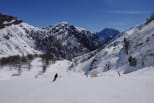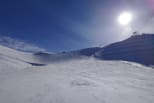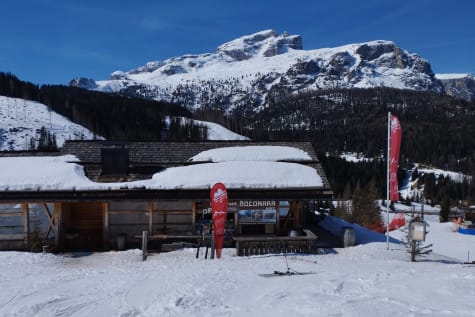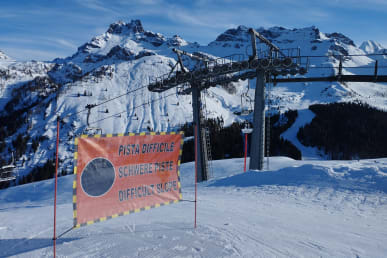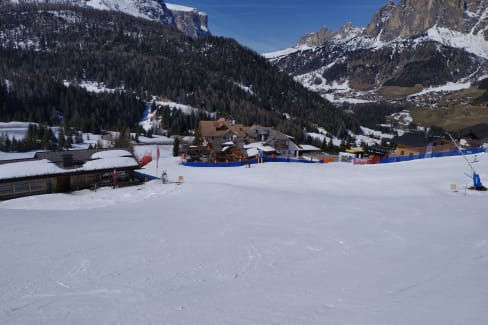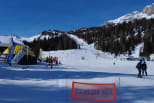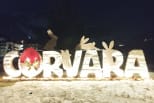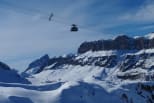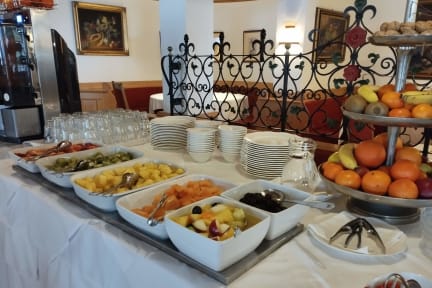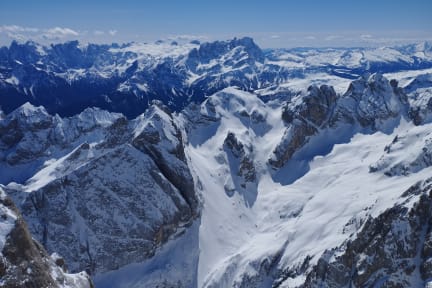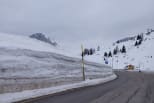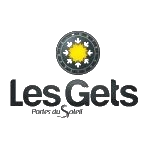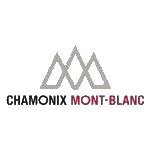Dolomiti Superski Ski Area
I now had a few days in which to give myself a crash course on the ski area (without the actual crashing, hopefully). It wasn't realistic to think that I was going to master the Dolomites in a week. This is after all the largest ski area in the world, with 1,200 kilometres of pistes on one lift pass. However, I was hopeful that, with a combination of my own research and plenty of picking of brains locally, I had chosen the right areas to explore. Anything I didn't get around to would just have to wait for next time, which hopefully won't be in the too distant future!
First morning, first impressions!
Wow! I opened my curtains to see the mighty Sassongher mountain that dominates the view from almost every angle. This set the tone for the near-vertical jagged peaks that I would be weaving in and out of in the coming days. The second thing I noticed is just how much snow there was, despite some people warning me that the third week of March was late to ski in the Dolomites. I was instantly impressed to see pistes that were the full width, the thick snow on some of the rooftops, and a general feeling that it was still winter. In a season that will once again unfortunately be remembered as "not a classic" Corvara looked to be doing very well indeed. I discussed this with Michael who told me that they hadn't had a bumper year but the conditions I was witnessing were perfectly normal for that time in March. With towns at 1500 and 1600 metres and so much skiing above 2000 metres, this part of the world has an instant advantage over many European resorts. Michael also reminds me that they are known as the champions of snowmaking - the reason that they can be so confident of an early December start every winter and the consistent presence of the World Cup before Christmas every year with giant slalom races in La Villa and the famous downhill in neighbouring Val Gardena (or Gröden if you prefer in German or Gherdëina in Ladin).
The Local Slopes
In town, there are three main cable cars, the Col Alto heading off in the direction of the other resorts of Alta Badia (La Villa, San Cassiano and Badia), the Borest that will take you to Colfosco and beyond to Val Gardena, and the Boe that links in to the Arabba ski area.
Anyone looking to do the Sella Ronda circuit will be able to jump onto it within minutes, irrespective of whether they wish to do it clockwise or anti-clockwise (which is better? It depends who you talk to!).
Our Ski Gathering venue, the Sporthotel Panorama, is slightly above the town and very near a blue run and a chair lift. It couldn't be easier for our guests to head out and get their ski legs back in on the wide cruisy blue runs that dominate the hillside behind the hotel. The Arlara chairlift gives easy access and the runs are generally long and wide and served by a modern and efficient lift network.
Highlights
- Take the chairlift up to Cherz from the Campolongo Pass for some incredible long runs off the back with views to die for.
- Experienced skiers will love the black run from the top of the Vallon chair that appears to start in a spectacular rocky amphitheatre.
- The plateau between Corvara and San Cassiano has a huge network of well-groomed blue runs and some fun ski cross courses.
Olympic Venues, the Super 8 and Horses
On the advice of Michael from the hotel, I set out early with an ambitious plan as I knew it would need several hours if I was to avoid getting stuck at the end of the day.
I headed straight for Armentarola on blue run number 9, where I was hoping to find a bus to transport me quickly up the high mountain pass to Falzarego. Within 30 seconds of unclipping my skis I had been ushered into a minibus to fill the last seat on that vehicle, and we were on our way.
Was this a wise decision, having already spent money on a ski pass to spend a further 8 euros on road transport? You bet your bottom dollar it was! This was a classic bucket list day and I had heard so much about the legendary Hidden Valley run that goes from the summit of Mount Lagazuoi - a stronghold that was fought over in the First World War and even has tunnels and fortifications that are visible to this day. I didn't just ascend the pass to do this one run, though, as I also had lofty ambitions to dip my toe into the Cortina d'Ampezzo ski area. The resort has been on my radar for a while and will only get more popular as it is set to host the 2026 Winter Olympics.
From the summit of the pass, I clipped back into my skis and set off on what is known as the Super 8 circuit. Looking at the map before arriving in the area, I never imagined that I would reach Cortina, but I found all of the links in this vast ski area to be smooth and efficient.
Unlike more recently created mega ski areas, many of which have been thrown together as a marketing gimmick, Dolomiti Superski has been in existence for over 40 years.
The Super 8 in Cortina is a wonderful circuit that centres around the Cinque Torri - five enormous stone pillars that rise up from the ground majestically. Words simply cannot describe the views from every stage of this circuit. The slopes are immaculately maintained, and at the summit of all main lifts you'll find a restaurant that wouldn't be out of place on the streets of many European capital cities. There is some serious money here, and I quickly realised I wasn't going to find a simple cheese sandwich easily for my lunch!
By 1:00 p.m. I found myself back at the summit of the pass, and it was time to start making my way back to Alta Badia. If you don't like heights, I'll be honest, you're going to hate the Lagazoui cable car! I'm so happy to have done it, as the hidden valley didn't disappoint. In fact nothing could have prepared me for the beauty of this area. My breath was well and truly taken away by the incredible views of stone pillars and frozen waterfalls, and in a more practical sense by a long winding red run that snakes its way down for what seems like an eternity.
After about 20 minutes, I was feeling that we must be almost at the valley floor. It was at this point that I spotted the only restaurant in the hidden valley, the Scotoni Refuge, and realised that I was only about half way down! As the gradient subsided and the craggy rock faces gave way to forestry, I reached the end of the piste and my transport back to Armetarola. I'd read about the horse tow, and it really does exist! To get out of the valley around 30 of us held on to ropes and we were towed out by two beautiful horses. I'd recommend this experience to anyone, but you'll need three Euros in cash as the elderly gentleman in charge of the horses made it clear that he does not (nor does he intend to in the future) accept credit cards! What an experience. I pick my way back to Corvara through the chopped up late afternoon snow with my muscles screaming at me to hit the sauna! It was a ski day that will live long in the memory.
Highlights
- The view of the Cinque Torri from Refuge Scoiattoli is amazing. It feels like you can almost reach out and touch the summits.
- Irrespective of the quirky access or the horse-drawn exit, the red piste (number 1) from the top of Lagazuoi down the hidden valley is one of the best pistes I have ever skied.
- On the way back to Corvara you may even have time to divert to La Villa to ski black run number 17 that is used for the World Cup races every year.
- The Croda Negra chairlift on the Super 8 circuit passes spectacularly between two jagged peaks that can make you feel very small indeed!
Marmolada - Queen of the Dolomites
It is fair to say that I knew very little about the Marmolada area before I started researching this trip, but it soon became one of the parts of the Dolomites that I was most keen to see. When a bluebird day came around, I didn't need to be asked twice to join some of our lovely guests on a trip to the glacier that sits below this mighty 3,342m peak. The first few runs from Corvara take you on part of the clockwise Sella Ronda circuit in order to access the quaint town of Araba, a town that I became quite taken with during my time in the area.
It immediately feels different to Corvara, not better or worse, just different. For me this variety only adds to the charm of the area as so many of Europe's large ski resorts look the same whichever way you turn. The wide cruisy blues, the classy shops and the fine dining restaurants of Corvara are replaced by a town that feels far more rustic, pizzerias with meals starting at just 7 euros and a network of lifts and pistes that feels like it is pitched at the more experienced skier.
The steep-sided valley is host to many long and steep black runs, most of them accessed from the high point of Arabba at Porta Vescovo. I came back to these at the end of the day just to finish my legs off and ensure that my thigh muscles would scream at me for days to come!
In the morning though, we took a straight-line approach and headed for the glacier, along with hundreds of other people who predictably had the same idea on a glorious weather day.
The lift system coped well and is largely very efficient, with the obvious weakness being a two-man chairlift, that can't be avoided if you wish to access Marmolada from Arabba over the Passo Padon. I can't help but imagine that such a key part of the infrastructure will be upgraded sooner rather than later. Once up and over the pass we cruised the beautifully prepared Padon 50 red piste all the way down the valley, following a meandering river past tucked-away eateries and grappa huts into the tree line above Malga Ciapela — the gateway to the mighty Marmolada glacier.
A three stage cable car whisks visitors up to the viewing terrace and the start point of the glacier ski pistes, but an hour-long stop at the top of the second stage was perfect in order to both acclimatise and to visit the excellent Great War museum.
I never considered just how much of the war was fought at these altitudes, although in many ways it makes sense considering the strategic importance of controlling the high ground.
Austrian and Italian soldiers fought in the snow and ice for two years before 1918 only for neither side to make significant gains — the artefacts given up every year by the glacier all contribute to the story and the fantastic museum really just underlined to me the futility of attritional warfare. After reminding myself that I was there to ski, we headed up to the highest point and with the air noticeably thin I gasped, both to catch my breath and in awe of the view. This is the highpoint of the Dolomites and the entire range is visible from the terrace above the cable car top station. In fact, you can even see all the way to the Otztaler Alps in Austria. Having clipped into our skis, we set off down the wide red Bellunese piste, the longest run in the entire Dolomiti Superski at 12km, carving turns on perfectly prepared snow and occasionally popping off the sides into reasonably deep powder. Once we had passed the beautiful Lago di Fedaia it was important to not miss the left turn to the Padon chairlift that was critical in getting us back to Arabba. To miss this commits a skier to a long round trip to both ascend and descend the glacier again, and as much as I would ski that piste every day of my life given half a chance, on this occasion we didn't have the time to repeat it!
Highlights
- Words don't do justice to the views across the Dolomites from Marmolada - you'll have to join us on a future trip to see for yourself!
- Black run number 5 (Sourassas) from Porta Vescovo all the way back down to Arabba is a really good workout.
The Sella Ronda
In many large ski areas, the signposted circuits are often a damp squib with too many people following each other and more time spent on lifts and travelling than on actually enjoying the slopes.
That isn't the case with the Sella Ronda (literally meaning the circuit of the Sella mountain range) and over the years the circuit has been developed so as to remove most weak points and bottlenecks.
Skiers pass seamlessly from one valley to the next following either the green (anticlockwise) or orange (clockwise) circuit and, whilst you do occasionally dip down into the towns, the skiing is mostly above 2000m making it very reliable. I managed to get to all parts of the circuit but over different days, and am therefore probably not best placed to judge which direction is better. My initial feeling though was that the clockwise circuit offered more challenges and more time on the skis, whilst the green route may be better for anyone preferring a more relaxed pace and longer breaks. I can't wait to explore further on my next visit but already did enough to know that I love all of the different areas within the Sella Ronda, from the aforementioned steep and challenging pistes in Arabba, to the wide runs above Canazei in the Val di Fassa that are perfect for huge carved turns, the famous slopes of the Val Gardena or the sunny confidence building blue runs that lead from the chocolate-box resort of Colfosco back to our perfect base in Corvara.
Highlights
- The Sella Ronda circuit allows skiers to pass seamlessly from one valley to the next, following either the green (anticlockwise) or orange (clockwise) circuit.
- The skiing is mostly above 2000m, making it very reliable and less congested compared to other large ski areas.

